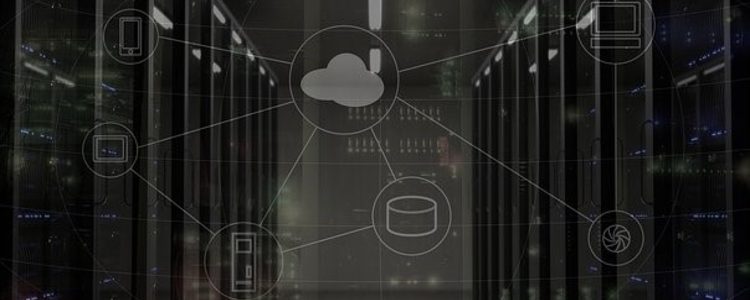More and more, businesses are outsourcing their data hosting and processing to the cloud. This often proves to be the most secure and economic choice, particularly for smaller businesses that don’t need instantaneous data analysis. In recent years, fog computing has begun to offer a middle ground solution. Nodes are located closer to the edge of the networks where data is being produced. This physical closeness to generated data means lower latency and faster responses, while longer term information is sent on to the cloud.
This isn’t a passing trend – the fog computing market is growing, and projected to be worth over $200 million in the next 5 years. This article outlines how fog computing can interact with the IoT and make huge differences to how businesses process data.
What is the scope of the IoT?
The Internet of Things (IoT) describes the millions of devices and machines that are connected to the internet and independently communicate with servers (instead of, or as well as directly with people). In the consumer space, this includes smartphones, wearable monitors, smart TVs, smart cars and digital assistants like Google Home and Amazon Echo. Commercial applications are much broader. Already examples can be found in wind turbines, solar farms, municipal traffic light systems, commercial coffee machines and telemedicine. Data is collected as these machines operate, and it is sent back to servers for analysis and real-time instruction.
How does fog computing compare to cloud computing?
The cloud computing model uses centralised servers to perform tasks like data storage, large scale aggregation and analysis, and application hosting. Businesses use the cloud to securely retain data and access applications without the need to provide servers or software at office/ground level. It’s an efficient and cost-effective method of operation.
Cisco coined the term ‘fog computing’, and it’s quickly become synonymous with ‘edge computing’. Fog computing acts as an intermediary between Things and the cloud. Fog nodes act like servers in miniature, but the main difference is that they are located in close physical proximity to where the data is being generated. They are designed to handle time-sensitive data analysis, while handing larger and less urgent data packets back to the cloud. The location of the fog nodes means data can be sent from, processed and returned to devices extremely quickly, thanks to lower latency speeds.
How can businesses benefit from engaging with fog computing?
Working with fog networks can result in increased cyber-security for businesses. This manifests in a number of ways.
Detects and prevents mass device hijacking
In October 2016, webcams and digital video recorders amongst other IoT connected devices were infected with malware. They were hijacked and used in a mass DDoS attack on Dyn servers that brought down large and vital websites like PayPal, Twitter, Netflix and others. It’s a glimpse at the potential hackers have to corrupt the IoT for their own ends. It’s possible that fog nodes may be able to identify the unusual behaviour and mitigate these attacks before they reach critical mass.
Provides extra protection for small devices
Common items like those used in the Dyn attack, along with other small IoT-connected devices are vulnerable because they don’t have independent cyber-security capabilities. Fog nodes creates a layer of security between them and potential attacks. This strengthens the safety of these vulnerable devices.
Provides rolling software updates and check security credentials
Fog nodes can take up the responsibility of distributing software updates to connected devices on a rolling, as needs basis. It’s far more practical than directing each device to connect through the cloud. This lessens downtime and ensures the devices are as secure as possible.
Reduces quantity of data traffic to being sent to the cloud
Because fog nodes can take up a lot of the data analysis load, less data needs to be sent through networks to far away servers. This reduces the threat of eavesdropping by hackers, thus keeping data more secure. Fog nodes will still communicate data to the cloud, but the quantity may be less, and the nature of the data can be anonymised.
Fog computing can also confer economic benefits, and increased productivity.
Increases processing speeds
The difference in processing time between data sent to the cloud and the same data being analysed in the fog is measured in seconds. When heavy data loads need to be analysed quickly, the time saved can result in a substantial decrease in waiting times. The resultant increase in efficiency leads to increases in productivity.
Increased processing speeds have a meaningful role to play in time critical situations beyond productivity gains. For example, as driverless cars become more popular, there will be times where split-second decisions will need to be made in order to avoid a collision. In cases like that, there is zero tolerance for high latency. Robotic telemedicine is another realm where data will need to be processed as quickly as possible to mirror a surgeon’s movements.
Reduces costs
Often cloud-based storage providers charge by the amount of data IoT devices and sensors are sending. Utilising fog nodes will reduce the amount of traffic, thereby reducing costs. Costs are also reduced as processing times decrease. These small but consistent changes can add up to significant financial savings for large scale operations.
In summary, it’s easy to see how fog computing can make data processing a much faster and more secure process, particularly for businesses that rely on multiple inputs from a high number of sources. It’s also clearly beneficial for companies and organisations that require exceptionally fast data analysis. If you’re not sure if fog computing will provide value for your business, contact your IT support team to explore its potential.
About Mustard IT, your fog and cloud-computing partner
Mustard IT provide the design, build, installation and maintenance of secure business computer networks, including fog nodes. Our trusted team are experienced able to explain complex issues to you in a language you’ll understand. Contact us today to find out how we can help you.




